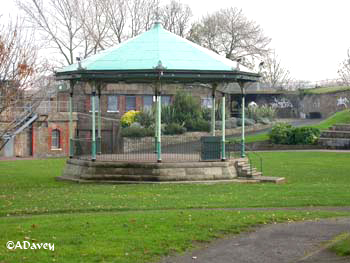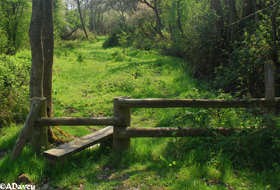 Landscape and research are both words that often get abstracted in their meaning, which can make the idea of landscape research mildly confusing to many people who comment on this website. The simplest interpretation is research into matters that affect the current landscape or townscape that we see around us.
Landscape and research are both words that often get abstracted in their meaning, which can make the idea of landscape research mildly confusing to many people who comment on this website. The simplest interpretation is research into matters that affect the current landscape or townscape that we see around us.
At Gravesend the history of the bandstand in the New Tavern Fort was clarified through searching in a systematic manner through the Council minute books. The reasons for a more recent layout of double lime avenues in a historic park in Hampshire lay in the personal history of Lord Wellington's nephew and his uncomfortable level of debt. The role of a significant lichenologist in Jersey may uncover a network of friendships that lie at the root of much of the horticultural and agricultural development in Jersey.
Landscape research has the same key stages as other research:
1. Identify a problem
2. Read up what has already been written about it
3. Identify if this is sufficient for the current needs
4. If more information is needed, identify what it is to be used for
5. Form a structure or hypothesis to be tested, in order to focus the research
6. Collect data and follow up relevant leads
7. Analyse results
8. Write up report and evaluate how much the answers have been of relevance to the initial problem
 As always, some projects are in need of more detail than others. Modern conservation plans for historic parks require detailed histories of the works done and analysis of the roles played in the development of the design and layout by key individuals. It is very important that there is an interest in the research and that facts do not get 'packaged' as a box-ticking exercise given to junior team members. Key elements/clues can become overlooked or missed out altogether if this happens.
As always, some projects are in need of more detail than others. Modern conservation plans for historic parks require detailed histories of the works done and analysis of the roles played in the development of the design and layout by key individuals. It is very important that there is an interest in the research and that facts do not get 'packaged' as a box-ticking exercise given to junior team members. Key elements/clues can become overlooked or missed out altogether if this happens.
Recent projects have included contributions to management and conservation plans for multiple historic parks, involvement with public consultation for rejuvenation of a complex waterfront open space and to a conservation plan for the retention of a Cold War airfield as a key heritage site. Other past projects have included multi-modal transport studies across the South East of England and co-ordination and data collection for the teams that produced the Character Map of England for the Countryside Commission (now Natural England)
 Landscape
Landscape Map
Map Biographical
Biographical